The Microsoft Azure pop-up alerts are classified as misleading advertising that created to force you into calling the fake Microsoft Tech Support Service. If you’re seeing those fake warnings then it is possible that your computer is infected by the ‘ad-supported’ software (also known as adware). As a result of the adware infection, your web-browser will be full of ads (pop-ups, banners, in-text links, offers to install an unwanted software) and your computer will be slower and slower.
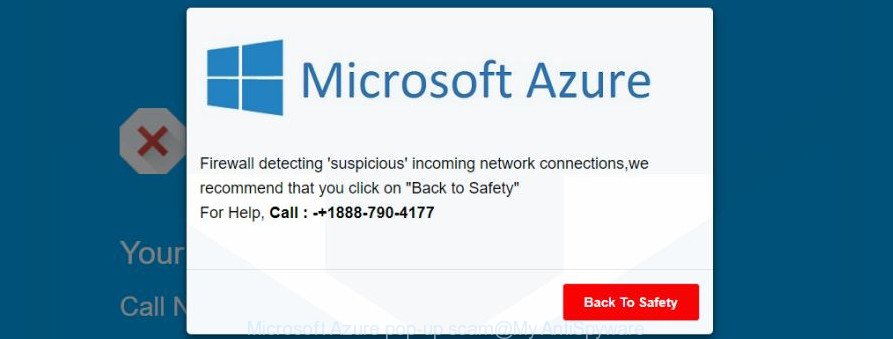
Microsoft Azure pop-up is a misleading advertising
The ad supported software that causes multiple misleading Microsoft Azure alerts and pop-ups, is the part of the software that is used as an online promotional utility. It is made with the sole purpose to display dozens of popups, and thus to promote the goods and services in an open browser window. Moreover, the adware can substitute the legitimate sponsored links on misleading or even banners that can offer to visit harmful web pages. The reason is simple, many advertisers agree on any ways to attract users to their pages, so the creators of adware, often forcing users to click on an advertising link. For each click on a link, the developers of the ‘ad supported’ software receive income.
The ad-supported software often modify all internet browser shortcut files which located on your Desktop to force you visit various undesired ad web-sites. As a result, your web-browser can still reroute you to an undesired ad web-site despite your machine is actually clean of adware and other malicious software.
We recommend to remove the adware that causes web-browsers to display misleading Microsoft Azure popup, as soon as you found this problem, as it can redirect your internet browser to web-resources that may load other harmful software on your PC.
Remove Microsoft Azure fake alerts (removal instructions)
We can help you delete Microsoft Azure from your internet browsers, without the need to take your computer to a professional. Simply follow the removal guidance below if you currently have the annoying ‘ad supported’ software on your PC system and want to remove it. If you have any difficulty while trying to remove the adware that causes misleading Microsoft Azure popup on your web-browser, feel free to ask for our help in the comment section below. Some of the steps will require you to reboot your system or exit this web-page. So, read this guide carefully, then bookmark or print it for later reference.
To remove Microsoft Azure, execute the following steps:
- How to remove Microsoft Azure pop-up scam without any software
- Delete adware through the Microsoft Windows Control Panel
- Get rid of unwanted Scheduled Tasks
- Remove Microsoft Azure popup scam from IE
- Remove Microsoft Azure fake alerts from Google Chrome
- Get rid of Microsoft Azure pop-up scam from Firefox
- Clean up the web-browsers shortcuts that have been affected by adware
- Use free malware removal tools to completely remove Microsoft Azure popup warnings
- How to block Microsoft Azure fake alerts
- Where the Microsoft Azure popup warnings comes from
- Finish words
How to remove Microsoft Azure pop-up scam without any software
The following instructions is a step-by-step guide, which will help you manually remove Microsoft Azure pop-up scam from the Google Chrome, Microsoft Internet Explorer, Edge and Firefox.
Delete adware through the Microsoft Windows Control Panel
In order to remove PUPs like this adware, open the MS Windows Control Panel and click on “Uninstall a program”. Check the list of installed applications. For the ones you do not know, run an Internet search to see if they are adware, hijacker or potentially unwanted programs. If yes, remove them off. Even if they are just a software which you do not use, then removing them off will increase your computer start up time and speed dramatically.
Make sure you have closed all browsers and other software. Press CTRL, ALT, DEL keys together to open the Windows Task Manager.

Click on the “Processes” tab, look for something dubious that is the adware which designed to display misleading Microsoft Azure popup warnings within your internet browser then right-click it and select “End Task” or “End Process” option. Most often, malicious software masks itself to avoid detection by imitating legitimate MS Windows processes. A process is particularly suspicious: it is taking up a lot of memory (despite the fact that you closed all of your programs), its name is not familiar to you (if you’re in doubt, you can always check the program by doing a search for its name in Google, Yahoo or Bing).
Next, uninstall any undesired and suspicious applications from your Control panel.
Windows 10, 8.1, 8
Now, click the Windows button, type “Control panel” in search and press Enter. Choose “Programs and Features”, then “Uninstall a program”.
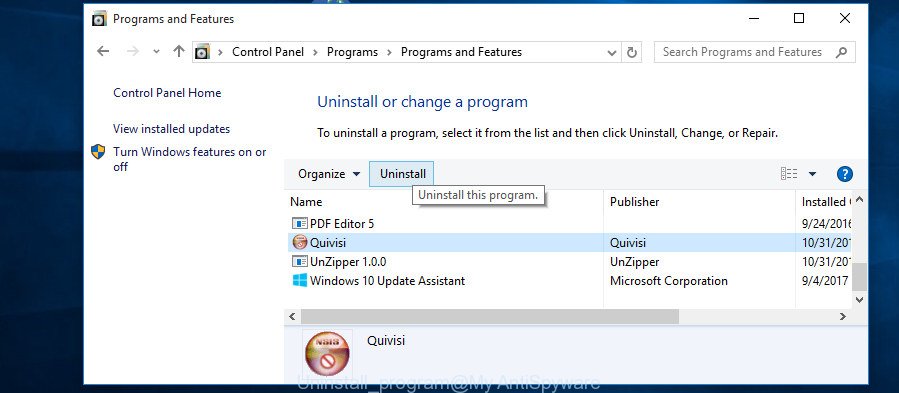
Look around the entire list of applications installed on your personal computer. Most likely, one of them is the ad supported software that causes multiple misleading Microsoft Azure alerts and pop ups. Choose the suspicious application or the program that name is not familiar to you and remove it.
Windows Vista, 7
From the “Start” menu in Windows, choose “Control Panel”. Under the “Programs” icon, select “Uninstall a program”.

Select the questionable or any unknown programs, then press “Uninstall/Change” button to delete this unwanted program from your system.
Windows XP
Click the “Start” button, select “Control Panel” option. Click on “Add/Remove Programs”.
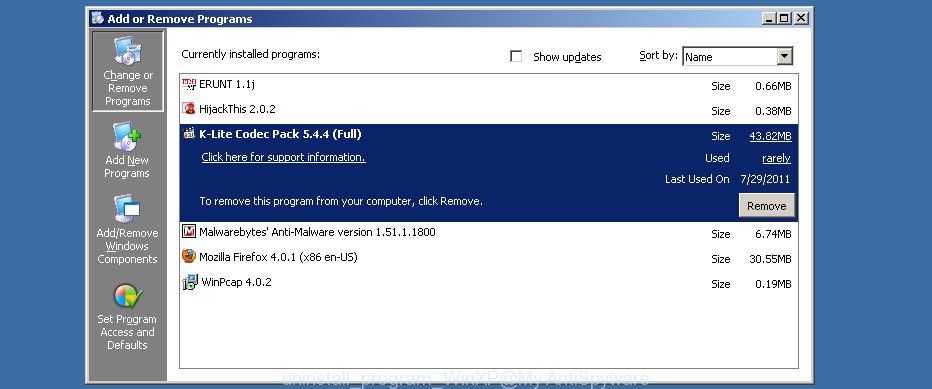
Select an unwanted program, then press “Change/Remove” button. Follow the prompts.
Get rid of unwanted Scheduled Tasks
If the unwanted Microsoft Azure web site opens automatically on Windows startup or at equal time intervals, then you need to check the Task Scheduler Library and remove all the tasks which have been created by unwanted programs.
Press Windows and R keys on the keyboard simultaneously. This opens a dialog box that titled with Run. In the text field, type “taskschd.msc” (without the quotes) and click OK. Task Scheduler window opens. In the left-hand side, press “Task Scheduler Library”, as displayed below.
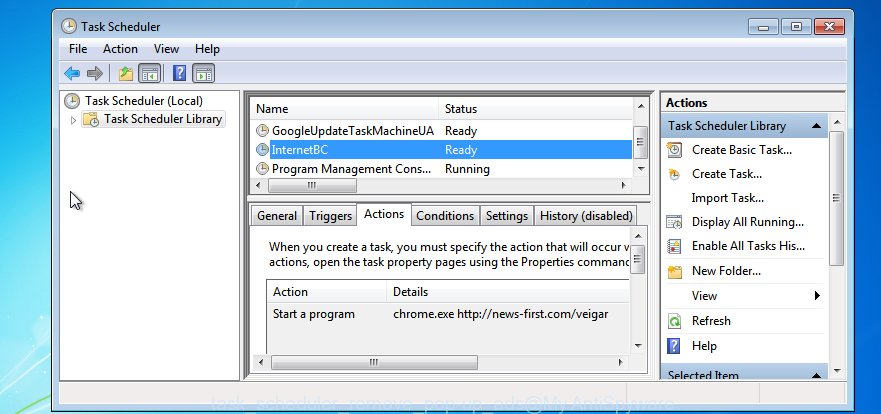
Task scheduler
In the middle part you will see a list of installed tasks. Please choose the first task, its properties will be show just below automatically. Next, click the Actions tab. Pay attention to that it launches on your machine. Found something like “explorer.exe http://site.address” or “chrome.exe http://site.address”, then delete this harmful task. If you are not sure that executes the task, check it through a search engine. If it’s a component of the adware, then this task also should be removed.
Having defined the task that you want to get rid of, then click on it with the right mouse button and choose Delete like below.

Delete a task
Repeat this step, if you have found a few tasks that have been created by adware. Once is done, close the Task Scheduler window.
Remove Microsoft Azure popup scam from IE
The Microsoft Internet Explorer reset is great if your web browser is hijacked or you have unwanted addo-ons or toolbars on your internet browser, that installed by an malware.
First, start the Microsoft Internet Explorer, then click ‘gear’ icon ![]() . It will show the Tools drop-down menu on the right part of the web browser, then click the “Internet Options” as displayed in the figure below.
. It will show the Tools drop-down menu on the right part of the web browser, then click the “Internet Options” as displayed in the figure below.

In the “Internet Options” screen, select the “Advanced” tab, then click the “Reset” button. The Microsoft Internet Explorer will display the “Reset Internet Explorer settings” prompt. Further, press the “Delete personal settings” check box to select it. Next, press the “Reset” button like below.

After the task is done, press “Close” button. Close the Microsoft Internet Explorer and reboot your system for the changes to take effect. This step will help you to restore your web browser’s search engine by default, start page and newtab to default state.
Remove Microsoft Azure fake alerts from Google Chrome
Reset Google Chrome settings is a easy way to remove the ad supported software, harmful and adware extensions, as well as to restore the internet browser’s start page, search provider by default and newtab that have been changed by ad supported software which cause misleading Microsoft Azure pop up warnings to appear.
Open the Google Chrome menu by clicking on the button in the form of three horizontal dotes (![]() ). It will show the drop-down menu. Select More Tools, then press Extensions.
). It will show the drop-down menu. Select More Tools, then press Extensions.
Carefully browse through the list of installed extensions. If the list has the plugin labeled with “Installed by enterprise policy” or “Installed by your administrator”, then complete the following guide: Remove Chrome extensions installed by enterprise policy otherwise, just go to the step below.
Open the Chrome main menu again, click to “Settings” option.

Scroll down to the bottom of the page and click on the “Advanced” link. Now scroll down until the Reset settings section is visible, as shown in the figure below and click the “Reset settings to their original defaults” button.

Confirm your action, click the “Reset” button.
Get rid of Microsoft Azure pop-up scam from Firefox
If the Mozilla Firefox settings like search engine by default, start page and new tab have been changed by the ‘ad supported’ software, then resetting it to the default state can help.
Press the Menu button (looks like three horizontal lines), and click the blue Help icon located at the bottom of the drop down menu as displayed on the image below.

A small menu will appear, click the “Troubleshooting Information”. On this page, click “Refresh Firefox” button as on the image below.

Follow the onscreen procedure to revert back your FF web browser settings to its original state.
Clean up the web-browsers shortcuts that have been affected by adware
After installed, this adware that causes misleading Microsoft Azure pop-up scam on your browser, may add an argument like “http://site.address” into the Target property of the desktop shortcut for the Firefox, Internet Explorer, Google Chrome and MS Edge. Due to this, every time you start the internet browser, it will open an annoying ad web-page.
Click the right mouse button to a desktop shortcut which you use to start your browser. Next, choose the “Properties” option. Important: necessary to click on the desktop shortcut for the web-browser that is redirected to the Microsoft Azure or other annoying page.
Further, necessary to look at the text that is written in the “Target” field. The ad-supported software that causes multiple misleading Microsoft Azure alerts and pop-ups can modify the contents of this field, which describes the file to be run when you start your browser. Depending on the web-browser you are using, there should be:
- Google Chrome: chrome.exe
- Opera: opera.exe
- Firefox: firefox.exe
- Internet Explorer: iexplore.exe
If you are seeing an unknown text such as “http://site.addres” which has been added here, then you should remove it, as shown on the screen below.

Next, click the “OK” button to save the changes. Now, when you run the web-browser from this desktop shortcut, it does not occur automatically redirect on the Microsoft Azure web-page or any other undesired web sites. Once the step is done, we recommend to go to the next step.
Use free malware removal tools to completely remove Microsoft Azure popup warnings
Manual removal is not always as effective as you might think. Often, even the most experienced users may not completely get rid of adware that developed to display misleading Microsoft Azure popup within your web browser. So, we suggest to scan your PC for any remaining harmful components with free adware removal software below.
Run Zemana Anti-malware to remove Microsoft Azure popup warnings
We recommend using the Zemana Anti-malware that are completely clean your computer of the ‘ad supported’ software. The utility is an advanced malware removal application made by (c) Zemana lab. It’s able to help you get rid of PUPs, browser hijackers, malware, toolbars, ransomware and ‘ad supported’ software that causes multiple misleading Microsoft Azure alerts and pop ups.

- Visit the page linked below to download the latest version of Zemana Free for Windows. Save it directly to your Microsoft Windows Desktop.
Zemana AntiMalware
165094 downloads
Author: Zemana Ltd
Category: Security tools
Update: July 16, 2019
- When downloading is complete, close all apps and windows on your computer. Open a folder in which you saved it. Double-click on the icon that’s named Zemana.AntiMalware.Setup.
- Further, press Next button and follow the prompts.
- Once setup is finished, press the “Scan” button . Zemana AntiMalware application will scan through the whole machine for the ad supported software that causes web-browsers to show misleading Microsoft Azure popup. A scan may take anywhere from 10 to 30 minutes, depending on the count of files on your personal computer and the speed of your personal computer. When a threat is found, the count of the security threats will change accordingly. Wait until the the scanning is complete.
- After the scan is done, Zemana will open you the results. You may move items to Quarantine (all selected by default) by simply press “Next”. Once that process is finished, you can be prompted to reboot your system.
Use Malwarebytes to delete Microsoft Azure pop up scam
Delete Microsoft Azure popup scam manually is difficult and often the ad-supported software is not completely removed. Therefore, we suggest you to run the Malwarebytes Free that are completely clean your PC. Moreover, the free application will allow you to remove malware, potentially unwanted software, toolbars and browser hijackers that your computer can be infected too.
Visit the following page to download MalwareBytes. Save it on your MS Windows desktop or in any other place.
327319 downloads
Author: Malwarebytes
Category: Security tools
Update: April 15, 2020
After the download is finished, close all software and windows on your computer. Open a directory in which you saved it. Double-click on the icon that’s called mb3-setup as shown in the following example.
![]()
When the setup starts, you’ll see the “Setup wizard” that will help you setup Malwarebytes on your personal computer.
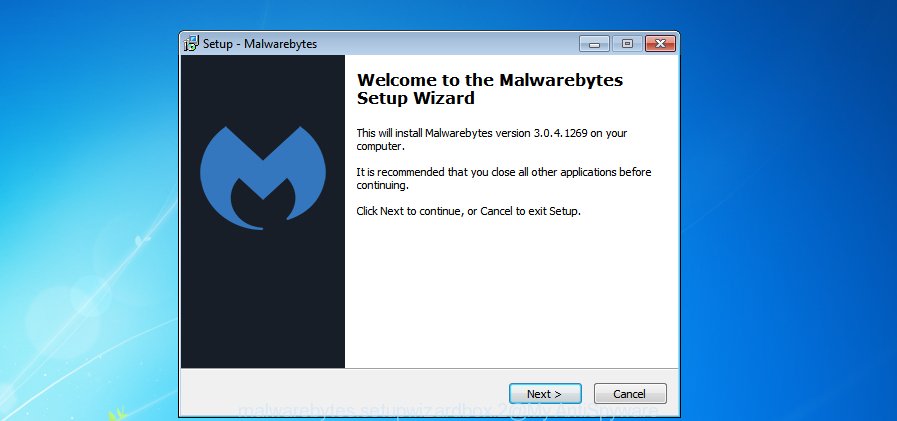
Once installation is complete, you’ll see window as shown below.

Now press the “Scan Now” button for scanning your computer for the adware that causes web-browsers to display misleading Microsoft Azure pop up. This task can take quite a while, so please be patient.

As the scanning ends, you will be displayed the list of all detected threats on your personal computer. Next, you need to press “Quarantine Selected” button.

The Malwarebytes will now delete ‘ad supported’ software which made to display misleading Microsoft Azure popup warnings within your browser. After disinfection is finished, you may be prompted to restart your machine.

The following video explains step by step tutorial on how to delete browser hijacker, adware and other malicious software with MalwareBytes.
Get rid of Microsoft Azure popup warnings and malicious extensions with AdwCleaner
AdwCleaner is a portable tool that searches for and deletes undesired applications such as browser hijacker infections, adware, toolbars, other internet browser extensions and other malware. It scans your PC system for adware that causes misleading Microsoft Azure fake alerts on your web browser and creates a list of items marked for removal. AdwCleaner will only erase those unwanted software that you wish to be removed.
Download AdwCleaner on your PC by clicking on the link below.
225650 downloads
Version: 8.4.1
Author: Xplode, MalwareBytes
Category: Security tools
Update: October 5, 2024
After downloading is finished, open the folder in which you saved it and double-click the AdwCleaner icon. It will start the AdwCleaner utility. If the User Account Control prompt will ask you want to launch the program, click Yes button to continue.

Next, press “Scan” . AdwCleaner tool will start scanning the whole personal computer to find out adware which designed to show misleading Microsoft Azure fake alerts within your web browser. A system scan may take anywhere from 5 to 30 minutes, depending on your computer. When a malware, adware or potentially unwanted programs are found, the number of the security threats will change accordingly. Wait until the the checking is done.

Once the checking is finished, AdwCleaner will open you the results as displayed in the figure below.

In order to remove all threats, simply click “Clean” button. It will open a prompt. Click “OK” button. The AdwCleaner will remove adware which causes misleading Microsoft Azure fake alerts on your browser and add items to the Quarantine. When disinfection is finished, the tool may ask you to reboot your machine. After restart, the AdwCleaner will display the log file.
All the above steps are shown in detail in the following video instructions.
How to block Microsoft Azure fake alerts
Enabling an ad-blocker program such as AdGuard is an effective way to alleviate the risks. Additionally, adblocker applications will also protect you from harmful advertisements and web pages, and, of course, block redirection chain to Microsoft Azure and similar web-pages.
Download AdGuard on your Microsoft Windows Desktop from the following link.
26913 downloads
Version: 6.4
Author: © Adguard
Category: Security tools
Update: November 15, 2018
After downloading is complete, start the downloaded file. You will see the “Setup Wizard” screen as shown below.

Follow the prompts. When the setup is complete, you will see a window as displayed in the following example.

You can press “Skip” to close the setup program and use the default settings, or press “Get Started” button to see an quick tutorial that will help you get to know AdGuard better.
In most cases, the default settings are enough and you don’t need to change anything. Each time, when you run your PC, AdGuard will launch automatically and stop popup ads, web sites like Microsoft Azure, as well as other malicious or misleading web-pages. For an overview of all the features of the program, or to change its settings you can simply double-click on the AdGuard icon, which may be found on your desktop.
Where the Microsoft Azure popup warnings comes from
In many cases, the free applications install package includes optional apps such as this ad supported software that created to show misleading Microsoft Azure fake alerts within your browser. So, be very careful when you agree to install anything. The best way – is to choose a Custom, Advanced or Manual installation method. Here uncheck all additional apps in which you are unsure or that causes even a slightest suspicion. The main thing you should remember, you do not need to install any third-party programs which you do not trust! The only one thing I want to add. Once the freeware is installed, if you uninstall this software, the annoying Microsoft Azure pop up advertisements will not be deleted. This must be done by yourself. Just follow the step by step guidance above.
Finish words
After completing the step-by-step instructions shown above, your machine should be clean from adware which cause misleading Microsoft Azure pop-up to appear and other malware. The MS Edge, Google Chrome, Firefox and Microsoft Internet Explorer will no longer reroute you to various intrusive sites like Microsoft Azure. Unfortunately, if the few simple steps does not help you, then you have caught a new ad supported software, and then the best way – ask for help in our Spyware/Malware removal forum.



















